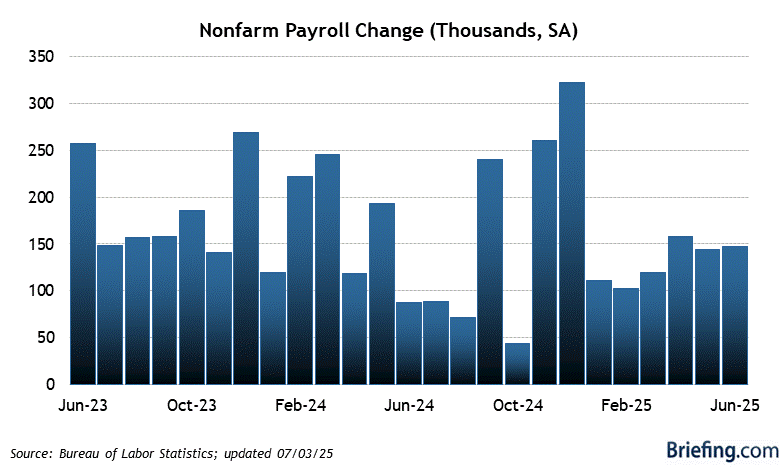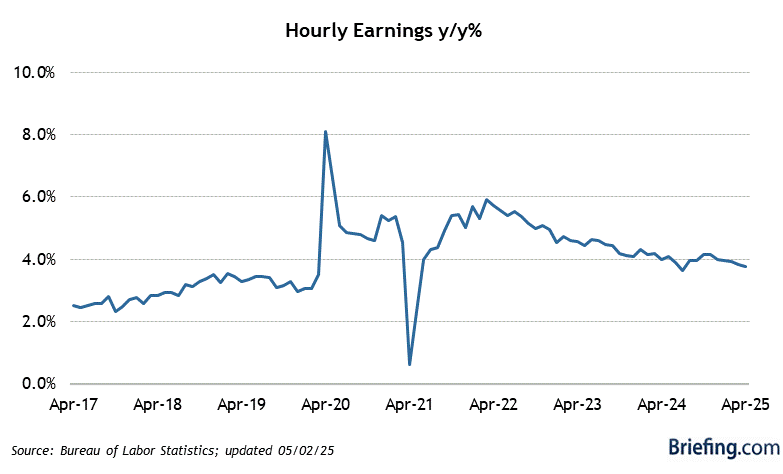Here are a few items from today's "Strategy Meeting" .....
STRATEGY MEETING: Monday, July 8, 2013
With US NonFarm Payroll data behind us and with the 'Earnings Parade" about to begin (with Alcoa's earnings release after Monday's closing bell), there are many questions to consider in formulating strategic and tactical portfolio moves:
1) NonFarmPayrolls: The data from last Friday was unquestionably good, further evidence of an improving employment picture in the US, albeit still at woefully slow pace..especially as seen by the U6 folks (involuntary part-timers and discouraged no-longer-looking) whose percentage went up to 14.3% in June from 13.8% the prior month....or by the "long-term unemployed" (those jobless for 27 weeks or more) which while down 1mm over the past 12 months, still register 4.3 million people!
But on balance, while there's still a long way to go, the data continues to move grudgingly in the right direction.

Earnings too surprised to the upside as hourly earnings rose y/y by the highest amount since June '11!

And while there's far more data to slice and dice within the overall employment data, one notable but often under-appreciated factoid was the uptick and uptrend in Job Leavers...folks who feel confident enough to quit their current job with the expectation that they'll find another job.
So, in general, a good number....supportive of the view that the Fed could start tapering in September, which appears to be the markets' current call.
But there were elements within the employment data that need to be watched closely that could derail a September tapering. For example, the job growth was heavily weighted in non-manufacturing industries such as retailers, services, health care, leisure and hospitality. Manufacturing jobs actually fell, along w/government jobs. Not that there's anything bad about job growth in the 'softer' industries, but those jobs tend to be relatively lower paid jobs and more volatile in terms of longevity. Furthermore, the number of involuntary part-time workers increased by 322k to 8.2mm in June. Again, good that folks are getting jobs, but worthy of close scrutiny in coming months as to how permanent and long-lasting these hires will be.
Bottom line, this type of data was very consistent with the notion that was expressed in a previous post re the impact of 'financial repression' on stimulating consumer spending. We're seeing that in various sectors, most notably auto sales and housing, and now we're witnessing it in hiring.
From a global perspective, the notion that the US is growing at 2-ish% GDP remains in play but with vulnerability to the downside should sequestration effects start to take a bigger bite, and should 'soft' industry employment gains fade. From a sector perspective, however, the weightings in Consumer Discretionary and Staple stocks appears to be supported by the data. In addition, tourism related industries appear to be broadcasting healthier levels of activity.
2) Earnings Parade...Q2 earnings season will begin Monday night w/the release of Alcoa's earnings. We've taken note in recent quarters how earnings estimates continue to be beaten down through the quarter, only to be met by 'earnings beats' when the actual releases come out! Have the bars been set too low? Have equity prices adjusted to the downside in sync with the lowered estimates? Our defensiveness in portfolio positioning in recent quarters especially leading to earnings release has been driven by these dynamics. How do we go into tonight's launch of the earnings parade? Consider clips from FactSet's comments below:
Bottom line...has the bar for earnings overall been set low enough such that the risks are to the upside in terms of earnings "beats" and in turn higher equity prices???? And has the recent equity setback that was triggered by "tapering" fears and then undone with stronger data that calmed tapering fears, positioned the market to have ample upside to respond to 'beats'??? Or has too much optimism already been priced in???During the second quarter, analysts reduced the projected earnings for the S&P 500 (based on the bottom-up EPS estimate) by 3.7%, which was below the 5-year (-6.4%) and 10-year (-4.2%) averages for a quarter. At the same time, a record high number (87) of companies have issued negative EPS guidance for Q2. Given the high number of companies issuing negative EPS guidance, how come the reduction in EPS for the index was below average for the quarter? The reason is that analysts slightly raised (+0.6%) their earnings estimates for companies in the Financials sector..... these upward revisions to estimates in the Financials sector offset the deeper cuts in earnings estimates in other sectors where more companies issued negative EPS guidance, such as the Materials, Industrials, and Information Technology sectors.
The estimated earnings growth rate for the S&P 500 overall for Q2 2013 is 0.8% this week... On March 31, the Q2 earnings growth rate for the index was 4.2%. Eight of the ten sectors have witnessed a decline in earnings growth rates since that date, led by the Materials, Information Technology, and Industrials sectors. Only the Financials and Utilities sectors have seen increases in expected earnings growth rates since the start of the quarter.....only four of the ten sectors are projected to report an earnings increase for the quarter, led by the Financials (17.0%) and Telecom Services (10.2%) sectors. On the other hand, the Materials (-7.0%) and Information Technology (-6.5%) sectors are predicted to see the lowest earnings growth. The estimated revenue growth rate for the index for Q2 is 1.2%, down from an estimate of 2.7% at the start of the quarter.
3) Geopolitical risk factors....There are many, not least of which being the current 'winter' going on in Egypt's "Arab Spring". The risks to further instability in the region and possible oil supply disruptions have gone up. Does it matter? Or more appropriately, does it matter as much as it used to before the US surge in oil and gas discovery, fracking and processing? Once again, we point you to a recent post re XLE and its relationship to the price movement of WTI. Will energy companies be able to capture profit opportunities despite the Middle East turmoil in Egypt, Syria, etc? Will the new profit opportunities in the US sourced energy supplies supplant lost opportunities in the Middle East? Are there ways to invest in the buildup of the US energy industry beyond the 'usual suspects' in the XLE etf? Is the US infrastructure properly fit to accommodate the movement of new-found energy supplies around the country and to transport and shipping depots? Hmmmm.....
4) Stay tuned for additional thoughts in coming days.....
Please continue to visit Soos Global Market Musings for updates.
(Sign up to "Follow by Email"! And share with others!)
(Please note: This article is solely meant to be thought provoking and is not in any way meant to be personal investment advice. Each investor is obligated to opine and decide for themselves as to the appropriateness of anything said in this article to their unique financial profile, risk tolerances and portfolio goals).
Disclaimer: Please read and consider important information related to all communication made by Soos Global on this site by clicking here.
Additional Disclaimer: currently long many stocks/ETFs including XLE. Positions may change at any time without notice.
(Sign up to "Follow by Email"! And share with others!)
(Please note: This article is solely meant to be thought provoking and is not in any way meant to be personal investment advice. Each investor is obligated to opine and decide for themselves as to the appropriateness of anything said in this article to their unique financial profile, risk tolerances and portfolio goals).
Disclaimer: Please read and consider important information related to all communication made by Soos Global on this site by clicking here.
Additional Disclaimer: currently long many stocks/ETFs including XLE. Positions may change at any time without notice.

No comments:
Post a Comment